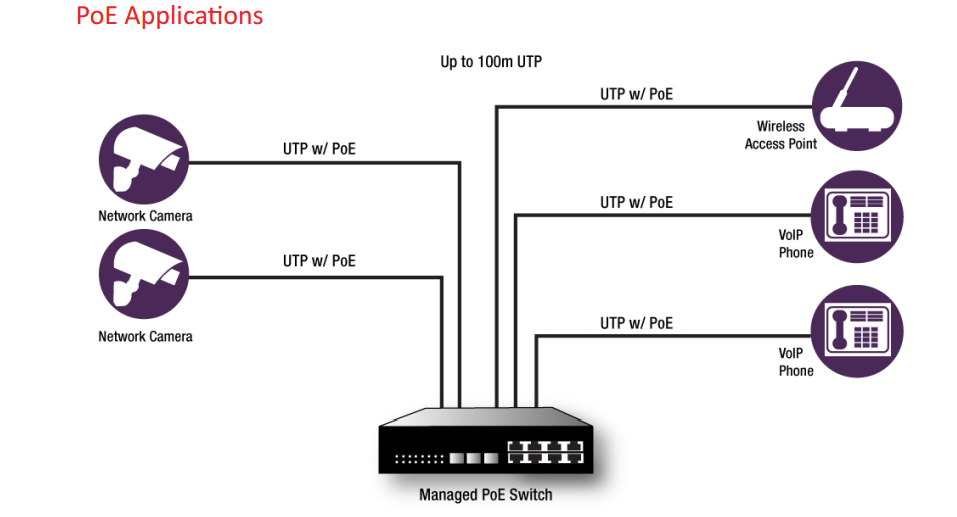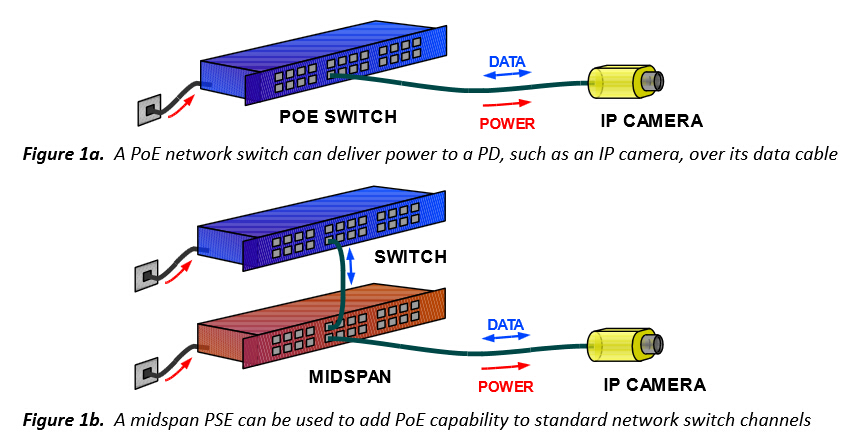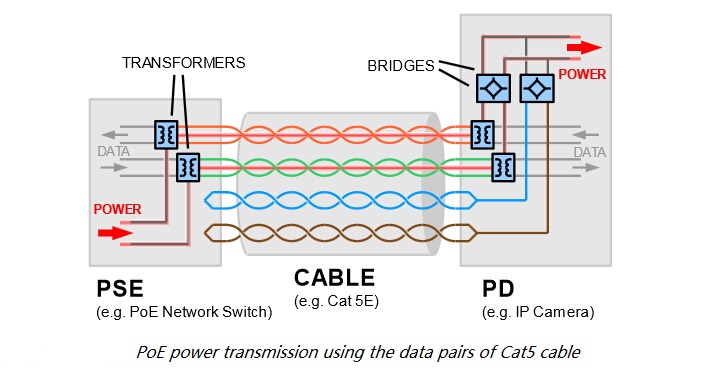For many network devices, like IP cameras, two connections would normally be needed—an electrical connection and the actual network connection. The electrical connection offers the necessary power for the device, and the network connection allows the device to communicate with the network. Cost will be increased if both of the connections are installed at the same time. However, PoE (Power-over-Ethernet) provides a cost-effective way for this kind of problem. Here are some basic introductions about PoE that you may be interested in.

Maybe most people know that PoE is a technology that enables powered devices such as surveillance cameras and IP phones to receive electrical power and data over the same Ethernet cable, supporting the same 100m transmission distance, which eliminates the need for another electrical connection and power lines. However, do you know clearly about PoE? Here, to get a further understanding of PoE, I’d like to list several most common misconceptions, which offers a new way to help you know clearly about PoE to some degree.
In the early days of PoE, many proprietary schemes indeed needed to get power on network cables. However, with the development of PoE, the IEEE 802.3af standard has achieved universal adoption, which means that the compatibility issue between all PoE equipment is assured.
This misconception is the most common one. But what we should keep in mind is that the power ratings marked by manufacturers are not fixed. Plugging a 5-watt camera into a 15-watt injector does not result in 10 watts of power being lost somewhere. Instead, the camera will simply draw as much electrical power as it needs.
This conception is not right at all. Common cables used in networks such as Cat 5e, Cat 6 and Cat6a, and RJ45 connectors are also can be deployed for PoE-enabled local area networks. Besides, power-sourcing equipment such as a PoE switch or PoE Injector utilises a power supply and helps the network link to a powered device.
Apart from data communications between two devices, PoE also enables an Ethernet switch/Hub to power a remote device over an existing LAN cable. Without PoE, any remote device needs to be powered independently. And PoE also has many other applications. Here are three major applications of PoE: network cameras, wireless access points (WAPs) and voice-over-IP phones (VoIPs). Following is a simple diagram of the PoE application.

Installing PoE to your network will bring lots of advantages that you cannot ignore.
By deploying the PoE, there is no need to install conduit, electrical wiring and outlets throughout the facility, which provides a significant reduction in investment. What’s more, as PoE runs via one cable directly, it also takes less time to install.
Increased Reliability
In terms of the nature of systems, fewer electrical cords and power plugs mean more reliability, for there is less chance for a malfunction or other problems. For example, power may need to be cut down by an electrician who was called to rewire the electrical circuits.
When planning out the location of access points, designers know there are always existing different problems. However, PoE enables designers to have more flexibility, because they are not limited by the need for proximity to electrical outlets. This also makes the deployment easier and cheaper for future modifications such as relocating access points or increasing network capacity.
Many PoE devices utilise the simple network management protocol (SNMP), which offers the electrical power supplied to access points in remote management. For instance, the power to a PoE-enabled access point can be shut off remotely following the detection of a security breach. Therefore, other SNMP-based features allow the power supply and consumption levels to be monitored by systems, which effectively ensures the network operations.
In summary, there is no doubt that PoE is an innovative technology that provides a more convenient, flexible and cost-efficient method for powering network devices. And many products support PoE in the market such as injectors, PoE switches, PoE media converters and network interface cards. For more information, please visit FS.com.


